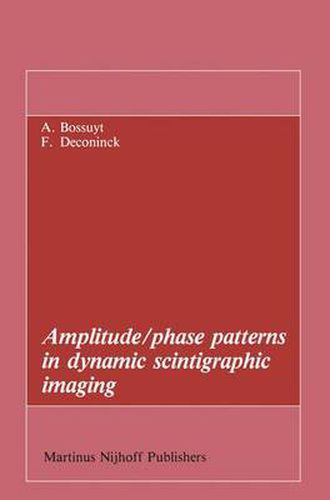Readings Newsletter
Become a Readings Member to make your shopping experience even easier.
Sign in or sign up for free!
You’re not far away from qualifying for FREE standard shipping within Australia
You’ve qualified for FREE standard shipping within Australia
The cart is loading…






This title is printed to order. This book may have been self-published. If so, we cannot guarantee the quality of the content. In the main most books will have gone through the editing process however some may not. We therefore suggest that you be aware of this before ordering this book. If in doubt check either the author or publisher’s details as we are unable to accept any returns unless they are faulty. Please contact us if you have any questions.
Conventional nuelear medieine proeedures study the dis- tribution of radiolabelled eompounds (radiopharmaeeutieals) in the body under physiologieal as well as under pathologieal eonditions. Beeause of their ability to visua- lise and to quantify the distribution of radiopharmaeeuti- eals within the body by means of external deteetors, nuelear medieine teehniques are basieally non invasive and funetion oriented. The spatial variation of the traeer distribution in the field of view, or the ehange in distribution during a time interval are interpreted as representing speeifie phy- siologie or pathophysiologie processes. As eompared to other diagnostie imaging teehniques, the spatial resolution of seintigraphie images is rather poor, their temporal resolu- tion is good. Faetors that will therefore determine the ultimate diag- nostie value of a seintigraphie study inelude 1. The speeifieity of the labelled eompounds for the process under study, 2. The resolution in time and space of the instrumentation, and its ability of measuring quantitatively tissue aetivity eoneentrations, 3. The formulation of physiologieal or pathophysiologieal models from whieh the distribution of the traeer ean be predieted. 2 While interpreting nuclear medicine data, the interrelations between these factors should permanently remain under consi- deration. The generalised use of minicomputers has resulted in major advances in information processing in nuclear medicine imaging procedures. Central to this is image digitisation.
$9.00 standard shipping within Australia
FREE standard shipping within Australia for orders over $100.00
Express & International shipping calculated at checkout
This title is printed to order. This book may have been self-published. If so, we cannot guarantee the quality of the content. In the main most books will have gone through the editing process however some may not. We therefore suggest that you be aware of this before ordering this book. If in doubt check either the author or publisher’s details as we are unable to accept any returns unless they are faulty. Please contact us if you have any questions.
Conventional nuelear medieine proeedures study the dis- tribution of radiolabelled eompounds (radiopharmaeeutieals) in the body under physiologieal as well as under pathologieal eonditions. Beeause of their ability to visua- lise and to quantify the distribution of radiopharmaeeuti- eals within the body by means of external deteetors, nuelear medieine teehniques are basieally non invasive and funetion oriented. The spatial variation of the traeer distribution in the field of view, or the ehange in distribution during a time interval are interpreted as representing speeifie phy- siologie or pathophysiologie processes. As eompared to other diagnostie imaging teehniques, the spatial resolution of seintigraphie images is rather poor, their temporal resolu- tion is good. Faetors that will therefore determine the ultimate diag- nostie value of a seintigraphie study inelude 1. The speeifieity of the labelled eompounds for the process under study, 2. The resolution in time and space of the instrumentation, and its ability of measuring quantitatively tissue aetivity eoneentrations, 3. The formulation of physiologieal or pathophysiologieal models from whieh the distribution of the traeer ean be predieted. 2 While interpreting nuclear medicine data, the interrelations between these factors should permanently remain under consi- deration. The generalised use of minicomputers has resulted in major advances in information processing in nuclear medicine imaging procedures. Central to this is image digitisation.